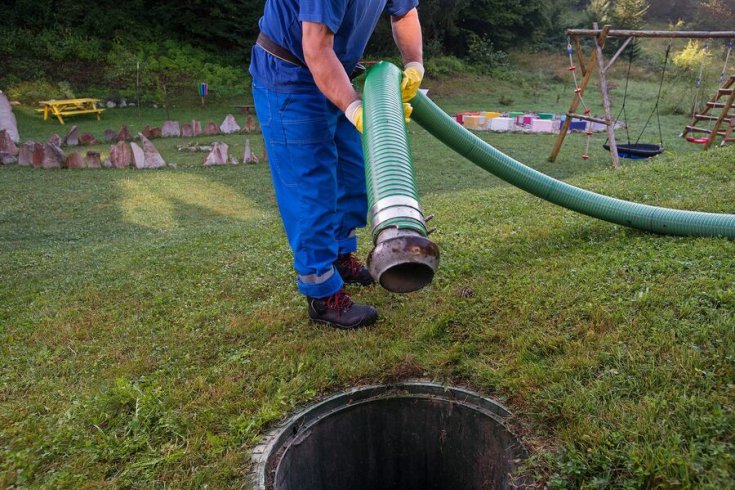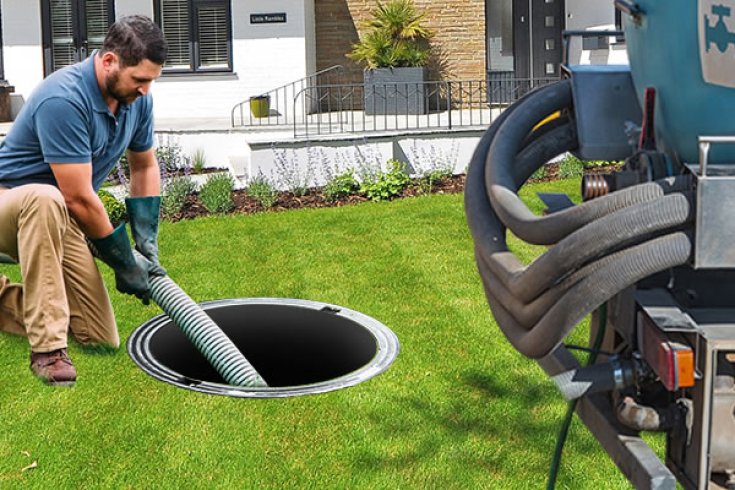
09
Proper septic tank placement is critical for an efficient and long-lasting system. Whether you're considering septic tank installation or dealing with issues that require septic tank repair, understanding the importance of strategic placement can save you time, money, and future headaches. A poorly located septic system can lead to frequent septic tank pumping, costly repairs, and even environmental damage. Here are some places you can place your septic tank so that you get maximum benefit and efficiency.
When planning septic tank installation, one of the first factors to consider is the distance from your home. Your septic tank should be located close enough for plumbing efficiency but far enough away to prevent odors or leakage issues from impacting your daily life. Typically, a septic tank is installed about 10 to 25 feet from the house. However, your local septic company can provide the specific guidelines for your area based on soil composition and local regulations.
Before installing or repairing a septic tank, consult local codes and regulations. Many municipalities have strict guidelines regarding where septic systems can be placed. These regulations may involve minimum distances from structures, wells, bodies of water, and property lines. Ignoring these rules can result in fines, legal complications, or the need for costly septic tank repairs.
The soil type and drainage capability of your property play a significant role in determining the location of your septic tank. The ground should be able to absorb and filter the wastewater efficiently. Soil with too much clay may not drain well, while overly sandy soil can lead to rapid water movement, increasing the risk of groundwater contamination. A professional soil test is often required before any septic tank installation in Weddington to ensure the ground can support the system.
Routine septic tank cleaning and septic tank pumping are essential for maintaining the system’s efficiency. Therefore, easy access to the tank is crucial for these services. A septic tank placed in an area that's hard to reach will make regular maintenance difficult and more expensive. When selecting a location, ensure that septic tank cleaning trucks can easily access the area. This will streamline the process and help keep maintenance costs down.
Tree roots can pose a major threat to septic systems. As roots grow, they can infiltrate the septic tank or the drain field, causing damage that requires expensive septic tank repairs. To avoid these issues, it’s recommended to install your septic system at least 50 feet away from large trees and shrubs. Additionally, you should avoid placing the tank near driveways, patios, or other areas where heavy equipment might compact the soil or damage the system.
The drain field, or leach field, is just as important as the septic tank itself. It’s responsible for filtering out contaminants from the wastewater. The drain field should be located in an area with good drainage and away from areas of heavy traffic. Proper placement will extend the lifespan of the septic system and reduce the need for frequent septic tank pumping or septic tank repairs.
The strategic placement of your septic tank is crucial to the overall effectiveness and longevity of your septic system. Whether you’re installing a new system or making repairs, always work with a septic company like Charlotte Septic Pros to ensure compliance with local regulations and to choose the most suitable location for optimal function. By considering factors like proximity to the house, soil quality, and maintenance access, you can avoid costly septic tank repairs and enjoy a reliable septic system for years to come.

29
Why Does My Septic System Smell Fine One Day and Terrible the Next? If you own a home with a…
Read more
19
Is Your Septic System Overdue? Simple Home Checks You Can Do Today For many homeowners, the septic system is a…
Read more
13
5 Signs Your Septic Tank Is Overdue for Pumping Your septic system works quietly behind the scenes, managing wastewater from…
Read more
07
Do Septic Additives Really Work? Septic additives are everywhere. You’ll see them at hardware stores, advertised online, and often recommended…
Read more
29
5 Things You’re Doing Every Day That Fill Up Your Septic Tank Faster Your septic system works quietly in the…
Read more
21
Is It Normal for Grass to Grow Greener Over My Septic Tank? If you’ve noticed a patch of grass in…
Read more
16
Why You Shouldn’t Wait Too Long to Pump Your Septic Tank A septic system works tirelessly behind the scenes to…
Read more
07
Septic Tank Smells? Let’s Talk About What’s Really Going on Underground A septic system is designed to manage wastewater efficiently…
Read more
31
Why Neglecting Your Septic Tank Can Affect Your Yard, Home, and Health A well-functioning septic system is essential for managing…
Read more
24
How to Prepare Your Septic System for Heavy Rain or Flooding When heavy rain or flooding hits, one of the…
Read more